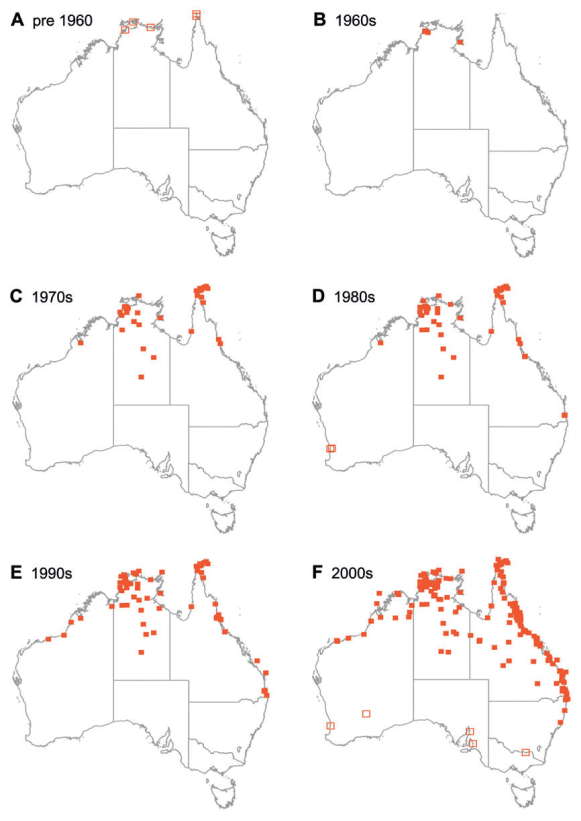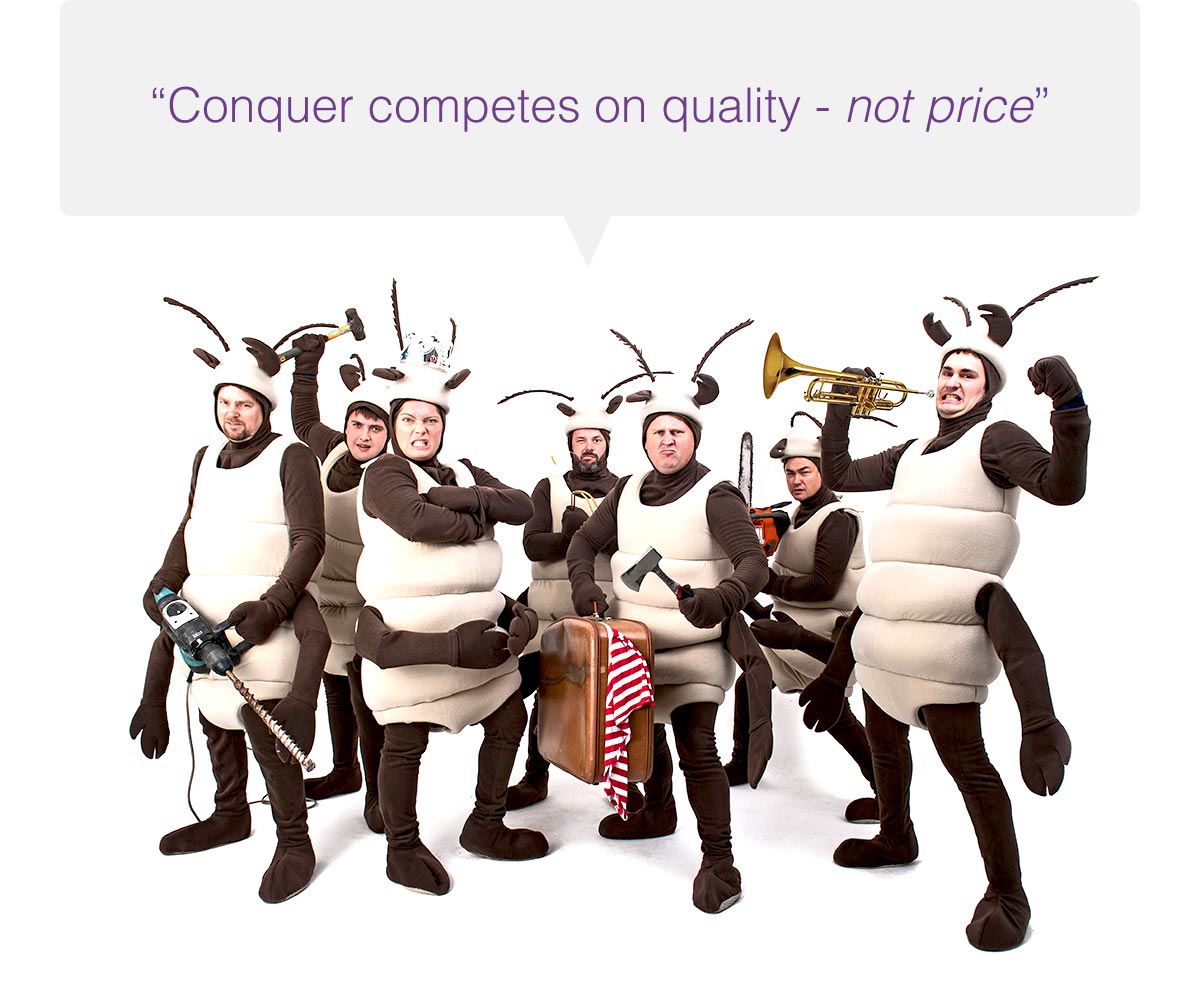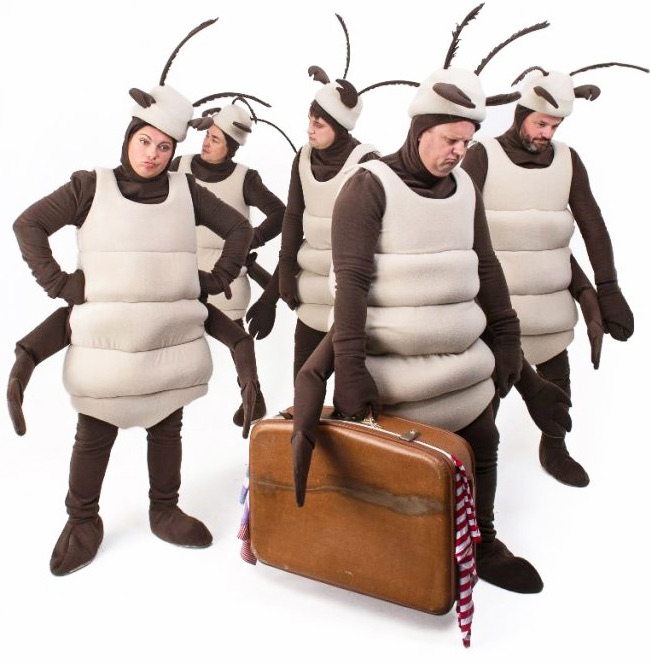Asian geckos - a problem?
Geckos are a familiar sight to most of us living in South East Queensland. At night, we see them scuttling across our walls and ceilings to pursue prey. These reptiles are a remarkably diverse group and have a broad distribution through tropical and warm temperate regions of the world.
The gecko that we most commonly see in our homes is the Asian Gecko, Hemidactylus frenatus. Also called the Common House Gecko or Pacific House Gecko.

Identification & habitat
The Asian geckos are pale pinkish-brown to dark grey, with mottled patterning in appearance. Based on the level of physical activity and light exposure, individuals can vary in their appearance. At a distance the Asian House Gecko is very similar to the native Dtella, but can be distinguished by a series of small spines or tubercules along the back and edges of the tail (in its original state) and lower back.
Head and body length: 6cm
Total length (including tail): 11cm
All Asian House Gecko toes have claws, but the inner toes of Dtella, are clawless.
More readily identified by voice rather than appearance – a loud and distinctive “chuck-chuck-chuck”.
Originally a tree-living species, Asian House Geckoes now thrive in human dwellings and buildings. Their feeding strategy is greatly enhanced by lights that attract insects and flat walls and ceilings upon which prey animals (insects etc.) are concentrated.
Diet
Asian House Geckos are generalist predators, eating a large variety of prey, including moths, small insects, spiders and other small lizards.
Impacts
Once considered to be a benign invader limited to urban areas, recent studies have shown that, as in other parts of their colonised range, Asian House Geckos have displaced native geckos from the house gecko niche and have spread into and become established in considerable densities in, bushland habitat in the Northern Territory and places such as Mon Repos Conservation Park in Queensland.
Reproductive cycle
Female Asian House Geckos lay two eggs approximately every four to six weeks. The large, white eggs are sometimes clearly visible through the body wall of a gravid female’s underbelly. In the tropics, the geckos breed year-round however, in sub-tropical and more temperate areas, their reproduction appears to take on a seasonal cycle, and they do not breed during the Winter.
Information from Queensland Museum For more information click: QM website
How to control asian geckos
For professional pest control companies in Australia, there are not many options available to control geckos. There is no registered poison designed specifically for geckos. To confuse the matter, there are many urban myths and homemade cocktails to supposedly eradicate them. Eradication by direct application of these potions will not be the best long term approach.
By various methods listed below, you will be able to reduce the number of geckos. But you must understand that you will never completely eradicate them over time they will re-colonize from surrounding homes and find recently unoccupied harbourages around your home. It’s an ongoing battle.
Our recommendations:
First step
Get your home pest controlled at least every 12 months. If you reduce the availability of likely prey, you reduce the gecko population./p>
Seal up cracks and holes where you see geckos. They too can be prey and normally hunt near a hole where they can scuttle into to escape. If they feel too vulnerable, they won’t hang around.
Ensure there are insect screens on the windows you open at night. As we mentioned, moths are the most desired prey for Asian geckos.
Turn off outdoor lights and pull the curtains. If there aren’t any lights to attract their prey at night, they will move on.
There is no such thing as a silly question - We strive to help.

Second step - not for the feinthearted

1.Glue boards and sticky cards, available through hardware stores or Coles & Woolworths, will catch and eventually kill geckos.
Glue boards should be placed near lights and windows or outdoors surfaces where geckos prefer to congregate. Warning, glue traps are not for the soft-hearted and do not kill the gecko quickly or allow for a humane release.

2.Glue boards with a UV attractant light. The UV light will attract moths and other flying insects to the glue board. The captured moths will attract the geckos. We recommend placing a certain distance away
from your home, so the moths and geckos aren’t drawn near your place.
The Asian gecko started to appear in Brisbane in the early 1980s. It was believed that they hitched a ride from Asian ports on container ships up North and spread down the Eastern coast of Queensland.

Being nocturnal, the Asian gecko loves to prey on moths, but being opportunist in its diet, it will dine on any insect that is slow enough to be captured. They tend to pounce rather than chase it’s prey. This is why you will see most of the geckos and their droppings near lights.
Asian geckos, as a lizard, don’t urinate. They only have a single opening for both the faeces and urine called the cloaca. You can easily identify gecko poo by a small white portion on their dropping, which urine expelled as uric acid.
Geckos don’t have eyelids. To keep their eyes moist, they lick them continuously with their tongue.
Geckos will drop their tails when a predator grabs hold. Obviously, an escape ploy that comes at a cost. But they do have the ability to grow it back, but never the same colour or markings.
Asian geckos are noisy. Asian geckos are much louder and more talkative than natives geckos. Their “chuk-chuk-chuk” is aptly described as ‘scolding’ and usually their attempt to protect their territory. Native geckos tend to chatter softly.
Geckos have a fantastic ability to walk vertically up walls and then across ceiling! I think it best you listen to Sir David Attenborough explanation in his BBC video.
They are the reptile we tend to see the most. Some regard them as a helpful pest controller that eats spiders, moths and cockroaches for free. Others get annoyed with their chucking noise, droppings, shorting their air-conditioner unit and the unsettling appearance on the ceiling of a lizard directly above them. Humans normally form a ‘love or hate’ relationship with our gravity defeating friends.
Check this link for some information about the impact of Asian geckos in Australia: www.daf.qld.gov.au – Asian gecko info sheet How to Gecko proof an air conditioning unit



